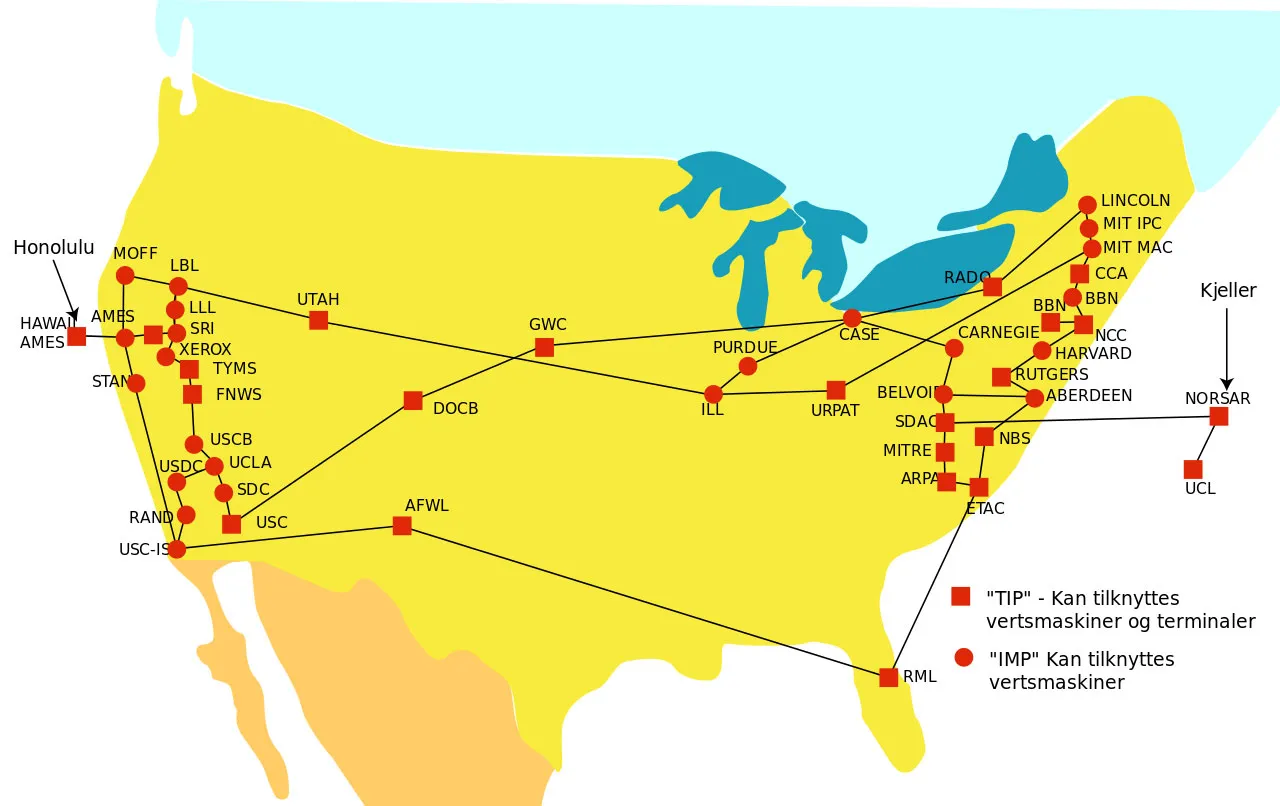The Advanced Research Projects Agency Network (ARPANET) was a pioneering network created by the United States government’s Advanced Research Projects Agency (ARPA) that introduced various key concepts of the internet, such as the ability to transfer files and share resources.
It was initially developed after the failure of CompuServe and other early networks in the late 1960s to address the need for researchers to share information, despite being physically separated. Launched in October 1969, the ARPANET was not at first connected to any other networks, but as other branches of ARPA began to join the system, the idea of networking computers together began to gain traction.
By the early 1970s, the ARPANET had dozens of nodes across the United States, employed several protocols, and had a larger user base. Towards the end of the decade, the National Science Foundation (NSF) created the first network to connect universities to each other for the purpose of academic research: the NSFNET. This allowed the ARPANET to connect to the NSFNET, which then opened up the network to more users and applications beyond traditional research.
The NSFNET eventually evolved into today’s modern internet. While ARPANET ceased operations in 1990, its legacy lives on in various protocols and technologies that are still used today, such as Transmission Control Protocol (TCP) and Internet Protocol (IP). The development of ARPANET marked the start of the internet age, and is an important part of computing history.





